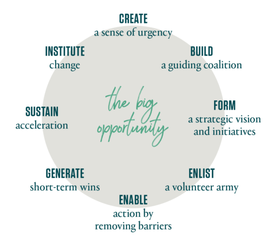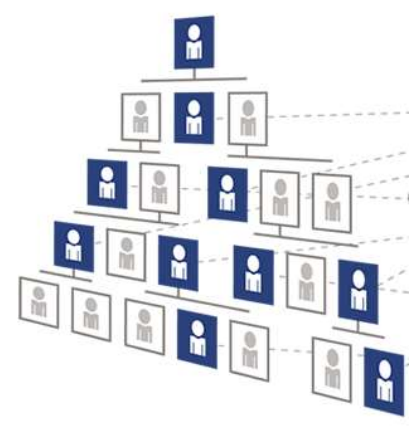Second Operating System - Dual Operating Models
Let our transformation coaches work with you on developing strategies around creating dual operating systems to help support your companies vision. The world is changing at a rate at which the systems, structures and cultures built over the past century can no longer keep up. Organizational Agility is the capability of a company to rapidly change or adapt in response to changes in the market. A high degree of organizational agility can help a company to react successfully to the emergence of new competitors, the development of new industry-changing technologies, or sudden shifts in overall market conditions.
The Network & The Hierarchy working together
What Current organizations look like they have a well structured hierarchy and with a lot of managerial processes that are driven with skill, this mature organization can produce incredibly reliable and efficient results on a weekly, quarterly or annual basis. What we need is a second operation system, which is organized like a network next to the existing hierarchy. This network based operating system complements rather than overburdens the hierarchy, freeing the latter to do what it is optimized to do.
The dual system organization has on the one side the hierarchy, on the other the network. The network organization contains no bureaucratic layers, command-and-control prohibitions, and six sigma processes, the network permits a level of individualism, creativity, and innovation that the hierarchical organization simply can not provide.
The dual system organization has on the one side the hierarchy, on the other the network. The network organization contains no bureaucratic layers, command-and-control prohibitions, and six sigma processes, the network permits a level of individualism, creativity, and innovation that the hierarchical organization simply can not provide.
The limits of this hierarchical system
• You find yourself going back again and again to the same small number of trusted people who lead key initiatives.
• Communication across silos does not happen with sufficient speed or effectiveness.
• Information from top to bottom and vice versa is slow.
• Policies, rules, procedures become barriers to strategic speed. • People cling to their habits and fear loss of power and stature.
The dual system organization has on the one side the hierarchy, on the other the network
The network organization contains no bureaucratic layers, command-and-control prohibitions, and six sigma processes, the network permits a level of individualism, creativity, and innovation that the hierarchical organization simply can not provide.
• You find yourself going back again and again to the same small number of trusted people who lead key initiatives.
• Communication across silos does not happen with sufficient speed or effectiveness.
• Information from top to bottom and vice versa is slow.
• Policies, rules, procedures become barriers to strategic speed. • People cling to their habits and fear loss of power and stature.
The dual system organization has on the one side the hierarchy, on the other the network
The network organization contains no bureaucratic layers, command-and-control prohibitions, and six sigma processes, the network permits a level of individualism, creativity, and innovation that the hierarchical organization simply can not provide.
PRINCIPLES & ACCELERATORS of the dual operating system (Kotter XL8):

• Many people drive important change, not just the usual few appointees (you need additional people, with their own particular windows on the world, and with their own particular good working relationships with others, in order to truly innovate).
• A “get-to” mindset, not “have-to”
• Action that is head & heart driven (not just head)
• More leadership, not just management
• An inseparable partnership between the hierarchical organization and the network (constant flow of information; volunteers in the network also have jobs in the hierarchy)
• A “get-to” mindset, not “have-to”
• Action that is head & heart driven (not just head)
• More leadership, not just management
• An inseparable partnership between the hierarchical organization and the network (constant flow of information; volunteers in the network also have jobs in the hierarchy)


